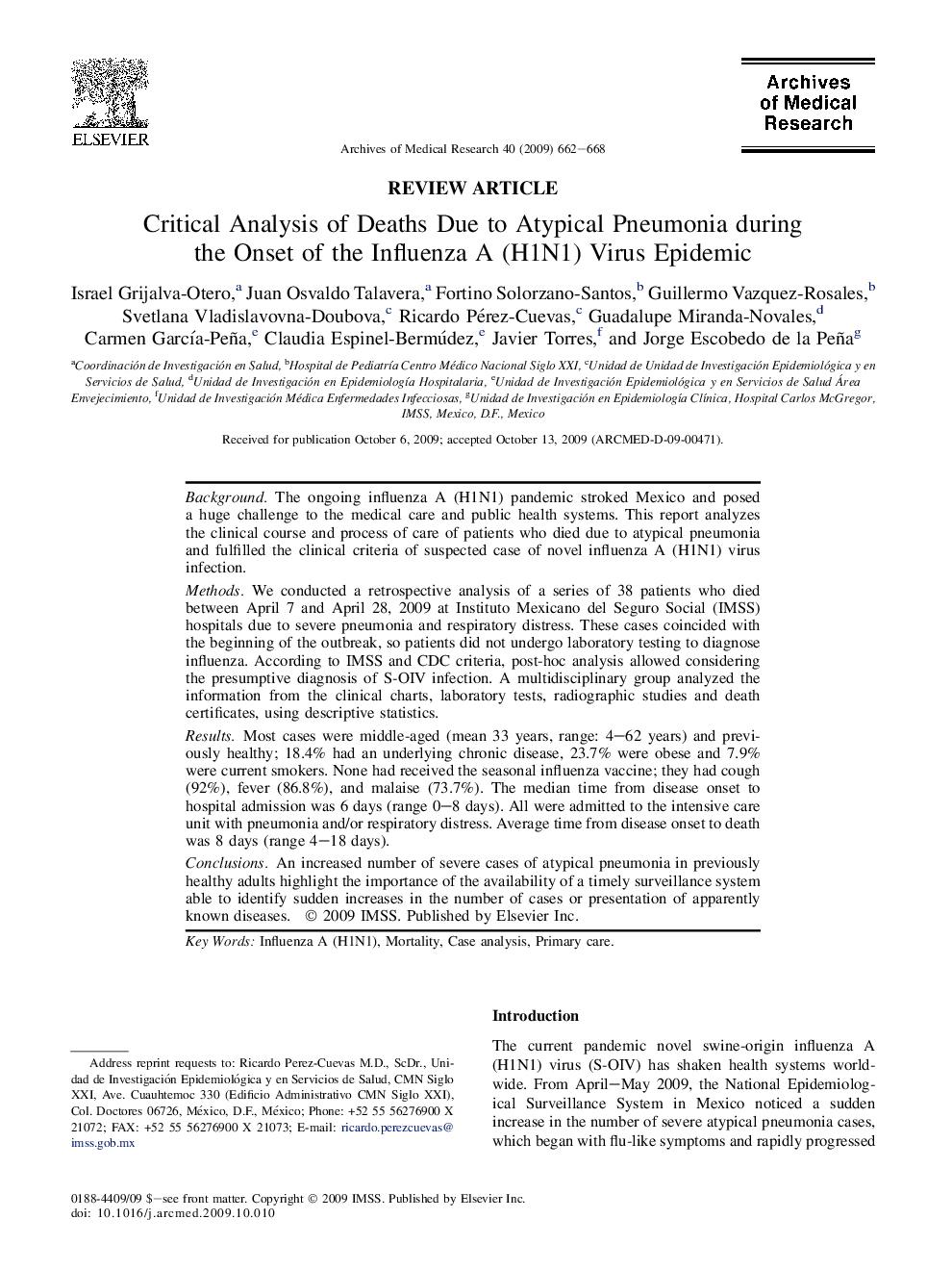| Article ID | Journal | Published Year | Pages | File Type |
|---|---|---|---|---|
| 3447260 | Archives of Medical Research | 2009 | 7 Pages |
BackgroundThe ongoing influenza A (H1N1) pandemic stroked Mexico and posed a huge challenge to the medical care and public health systems. This report analyzes the clinical course and process of care of patients who died due to atypical pneumonia and fulfilled the clinical criteria of suspected case of novel influenza A (H1N1) virus infection.MethodsWe conducted a retrospective analysis of a series of 38 patients who died between April 7 and April 28, 2009 at Instituto Mexicano del Seguro Social (IMSS) hospitals due to severe pneumonia and respiratory distress. These cases coincided with the beginning of the outbreak, so patients did not undergo laboratory testing to diagnose influenza. According to IMSS and CDC criteria, post-hoc analysis allowed considering the presumptive diagnosis of S-OIV infection. A multidisciplinary group analyzed the information from the clinical charts, laboratory tests, radiographic studies and death certificates, using descriptive statistics.ResultsMost cases were middle-aged (mean 33 years, range: 4–62 years) and previously healthy; 18.4% had an underlying chronic disease, 23.7% were obese and 7.9% were current smokers. None had received the seasonal influenza vaccine; they had cough (92%), fever (86.8%), and malaise (73.7%). The median time from disease onset to hospital admission was 6 days (range 0–8 days). All were admitted to the intensive care unit with pneumonia and/or respiratory distress. Average time from disease onset to death was 8 days (range 4–18 days).ConclusionsAn increased number of severe cases of atypical pneumonia in previously healthy adults highlight the importance of the availability of a timely surveillance system able to identify sudden increases in the number of cases or presentation of apparently known diseases.
